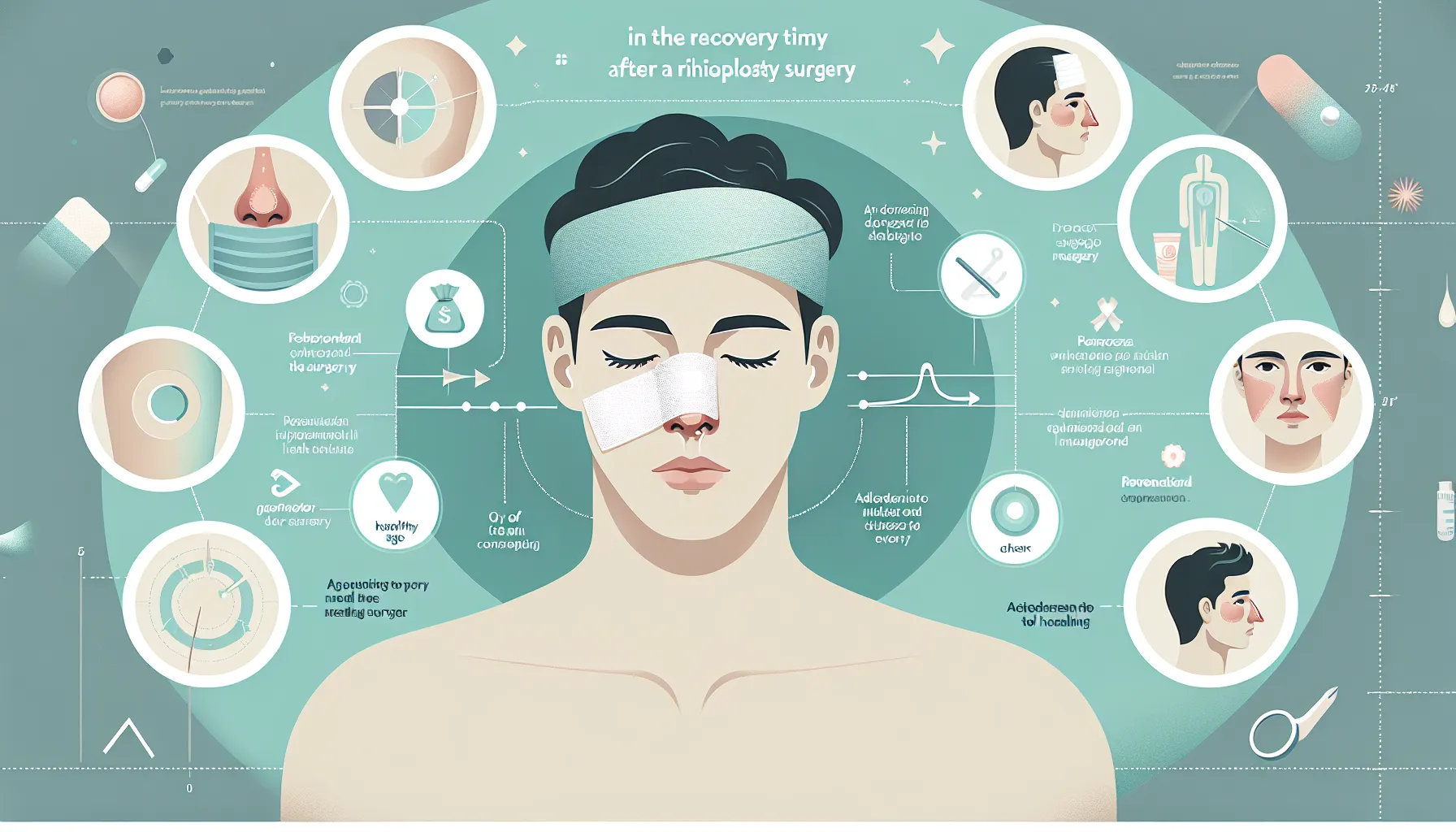AI Insights on Rhinoplasty Recovery Timelines: What to Expect
Understanding the Basics of Rhinoplasty Recovery
Unveiling the First Week Post-Surgery
Picture this: you've just embarked on your rhinoplasty recovery journey, and the first week feels like stepping into uncharted territory. It’s not just about healing; it’s about patience, self-care, and yes—embracing the quirks of recovery.
Here’s what you might experience during these early days:
- A tender nose that feels like it’s wearing an invisible crown—swelling and bruising are part of the royal package.
- Breathing through your mouth more than you'd like (hello, dry lips—don’t forget a hydrating balm!).
- A splint on your nose that becomes your temporary best friend, protecting your delicate masterpiece.
Pro tip? Keep your head elevated, even while binge-watching your favorite show. Gravity is your ally here, helping to reduce swelling faster than you’d think. And those tiny hiccups, like congestion or fatigue? They’re like surprise guests at a party—unexpected but manageable with a little preparation.
Your body is working overtime, so be gentle with yourself. This phase isn’t just physical; it’s emotional too. You’re laying the foundation for your beautiful new look, one careful step at a time.
How AI is Transforming Recovery Timeline Predictions

How AI is Shaping the Path to Recovery
Imagine having a crystal ball that tells you exactly how your recovery from rhinoplasty will unfold. Well, thanks to
AI-driven predictions, that future isn't as far-fetched as it sounds! Gone are the days of vague timelines and guesswork. Now, advanced algorithms analyze your unique medical history, lifestyle habits, and even your genetics to craft a recovery roadmap tailored just for you. It's like having a personal recovery coach whispering in your ear.
Let’s break it down. With AI, you’ll know:
- When you can expect swelling to subside (no more endless Googling!)
- Which post-op care techniques will work best for your specific case
- Potential risks flagged before they even arise
Think about it: your body isn’t a cookie-cutter model, so why settle for one-size-fits-all advice? AI learns *you*. If Sarah down the street bounced back in two weeks but you need three, AI will let you know upfront—no surprises. Recovery just got a whole lot smarter.
Factors Influencing Rhinoplasty Recovery Time

The Hidden Factors That Shape Your Rhinoplasty Recovery
Let’s talk about the not-so-obvious details that could influence how smoothly (or not) your rhinoplasty recovery journey unfolds. It’s like baking a cake—you need the right mix of ingredients, timing, and patience to get it just right. But what are these “ingredients” in the world of nose surgery?
First, there’s the type of procedure you’ve had. A simple tip refinement? That might be a walk in the park compared to a full reconstruction. Then there’s the skill of your surgeon—because, let’s face it, not all hands are equally gifted. And don’t forget your own body’s quirks:
age, skin thickness, and overall health can play starring roles.
Here’s a quick list of game-changers:
- Your aftercare habits: Are you religiously following post-op instructions or playing it fast and loose?
- Environmental factors: Dry air, stress, or even too much sun can mess with healing.
The bottom line? Every nose—and every recovery—is unique. Think of it as your personal masterpiece in progress.
Tips for a Smooth and Speedy Recovery

Unpacking the Healing Journey
Picture this: you’ve just undergone rhinoplasty, and now the waiting game begins. Recovery isn’t a one-size-fits-all process—it’s a patchwork quilt of small victories, patience, and self-care. The first few days? They’ll likely feel like a whirlwind. Swelling might puff up your face like a marshmallow in hot cocoa, and bruising could leave a rainbow of colors under your eyes. But don’t worry—this is your body’s way of saying, "I’m hard at work!"
By week two, you might notice the swelling has taken a backseat, and breathing starts to feel less like snorkeling through a straw. Here’s where structured care matters most. Keep these tips in mind:
- Stay elevated: Sleeping with your head propped up helps reduce swelling.
- Hands off: Avoid touching or bumping your nose—it’s not ready for any surprises yet!
Remember, progress isn’t linear. You may wake up one day feeling like a million bucks, and the next, a little tender. That’s okay! Healing is a journey, not a sprint.
Future Trends in AI and Post-Surgical Care

Your Healing Journey: What Happens and When?
Picture this: you’ve just had your rhinoplasty, and now the countdown to your new look begins. But what does the timeline of recovery really feel like? Let’s break it down.
In the first few days, expect some swelling and bruising—it’s like your nose is throwing a little tantrum after all the attention. Don’t worry, though, this phase passes quicker than you think. By week two, most people can ditch the sunglasses-and-scarf disguise as visible signs of surgery fade away.
Now comes the patience game. Over the next few months, subtle changes take place beneath the surface. Your body is like an artist, sculpting and refining quietly. Here's a quick peek at the typical milestones:
- 2-4 weeks: Back to light exercise and social life (hello, selfies!).
- 3-6 months: Swelling reduces significantly, revealing a clearer picture of your results.
- 1 year: Final masterpiece—your nose has fully healed.
Remember, every nose—and every recovery—is as unique as a fingerprint. Embrace the process; transformation takes time!




